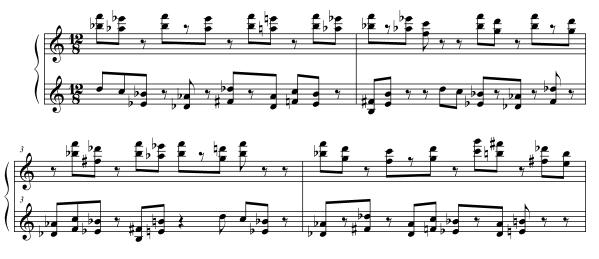| - On this page are three examples that show
the potential for DM-D applied to different musical styles: Baroque,
Classical, Romantic, Contemporary (recreation of a piano study by
G.
Ligeti). We recommend downloading all the files in each instance.
Then, try
to make changes and evaluate how they affect the outcome. To do this,
the files must be copied to the DM-D Working Folder. - Finale has been used as editor of music examples. So, sequences and harmony files in this format are included. However, they can be handled with other editors (such as Sibelius or freeware MuseScore) through XML files. - The scores shown in the examples are those produced by the program, with no modification or arrangement. As described in other sections, the output is in MidiFile format. This means that, although the sound is right, when displaying the score in an editor the accidentals can mistakenly appear changing flats by sharps, and vice versa. - You should also bear in mind that, if you perform the examples execution with DM-D, the result will be very similar but not identical to that shown in them. This is because Composer programming includes random values, which vary each time you run DM-D. |


